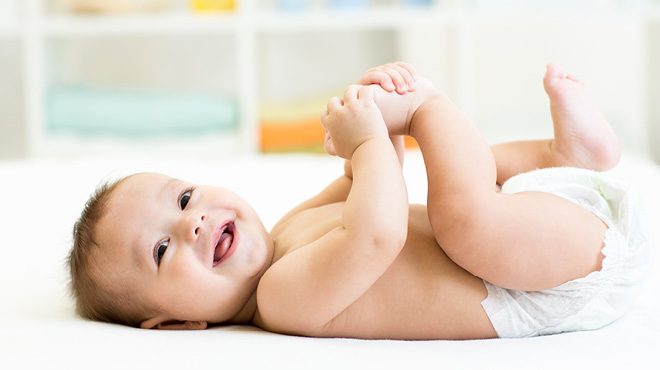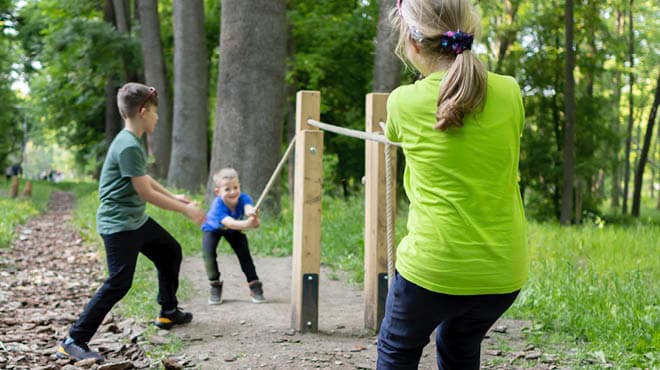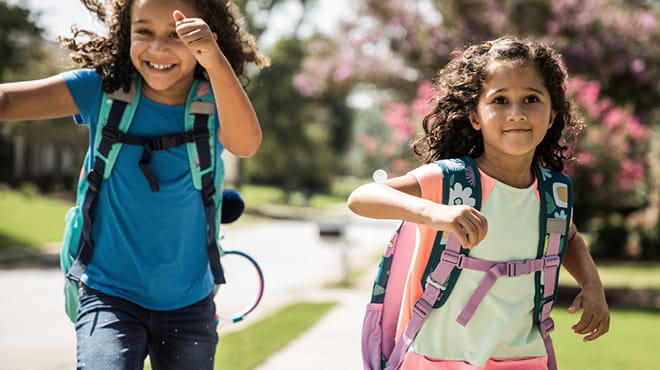Are backpacks hurting your kids' backs?

The backpack is as much a part of school life as homework, pencils and recess. Kids use backpacks to carry everything they need during the day and make a fashion statement. Unfortunately, the excess weight of supplies stuffed into an improperly worn backpack may lead to sore joints and muscles.
As a new school year begins, follow these tips to help kids take a load off to keep their backs healthy:
Limit backpack weight.
Students of all ages seem to carry heavier loads in their backpacks. They are often toting a day's worth of textbooks and a change of clothing for after-school activities, plus school projects and lunch. As a result, many parents have heard their school-age children complaining of back pain.
Overall, adults and children should not carry more than 15% of their body weight in a backpack. For example, the backpack for a 60-pound child should weigh less than nine pounds.
Even when worn properly, your student may need to lean forward to compensate for extra backpack weight. This can affect the natural curve in the lower back. Extra weight also can cause a rounding of the shoulders and an increased curve in the upper back. As a result, children may experience back, shoulder and neck pain.
Adjust the backpack properly.
When worn properly, backpacks are the best way to carry things, especially for long periods of time.
Backpacks should be worn using both straps. Slinging a backpack over one shoulder can cause a person to lean to one side to compensate for the uneven weight. This can curve the spine. Over time, this can cause lower and upper back pain, strained shoulders and neck, and even functional scoliosis (curvature of the spine). Teenage girls are especially susceptible to scoliosis.
Tighten the straps so the pack sits high on your child's back with the top of the pack about even with the shoulder blades. It also should be snug, so it doesn't sway side to side while walking.
When properly worn, the back and abdominal muscles support a backpack. These are the strongest muscles in the body, and stabilize the trunk and hold the body in proper postural alignment. Improper backpack use presents some dangers to young, still-growing joints and muscles.
Look for key pack features.
Urge your children to look past the color or design when selecting a backpack.
These features can make a significant difference in how they feel while wearing the pack at school:
- Wide straps
Wide, padded straps won't dig into the shoulders, and they are more comfortable. Narrow straps can hinder circulation, causing numbness or tingling in the arms, which may cause weakness in the hands over time. - Multiple sections
Select a backpack with many pockets and sections to keep children organized. This also helps distribute the weight more evenly across the pack. - Waist belt
Tightening the waist belt helps distribute the weight of the backpack more evenly and support children's abdominal muscles. - Lightweight when empty
It's also wise to consider the weight of the backpack when empty so your children don't have additional weight beyond books and supplies. For example, a canvas backpack will be lighter than leather. - Reflective material
If your children walk or bike to school, look for a backpack that has reflective strips that make them more noticeable to drivers.
Overall, you should encourage your children to wear their backpacks properly and keep them light. Have them use both straps and make frequent stops at their lockers throughout the day to avoid carrying all their books at once. And leave nonessentials at home.
Talk with your children's primary care providers if they are in pain or have discomfort before a problem becomes serious.
Michelle Rein, M.D., is a physician in Family Medicine in La Crosse, Wisconsin.



